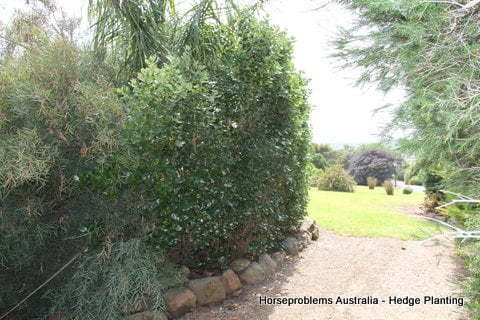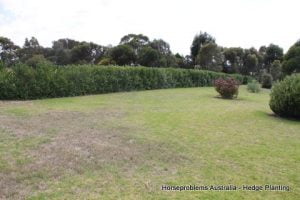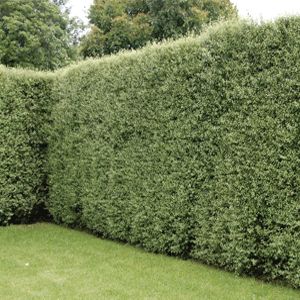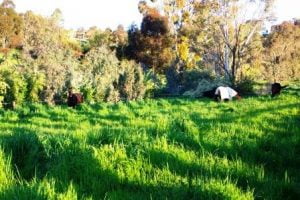2017
My new preferred alternative. Much longer Age and tough as Hell, with FAST growth.
2 Years Growth and been trimmed 3 times

http://vro.agriculture.vic.gov.au/dpi/vro/vrosite.nsf/pages/invasive_mirror_bush
It throws a few Babies around the Place though, which I just spray during Weed Spraying. Small price to pay for Wind Breaks, privacy, Horse protection and Pasture protection.
OLIVES
Yes, they are all viewed by some Councils, as Pests but they forget about Global Warming

They are the toughest of all, longest lasting and all of these Plants will end up being accepted as the Planet dies 🙁
LUCERNE TREES
TAGASASTE
Chamaecystisus proliferu

Hi – I am thinking of growing some Lucerne trees for my thoroughbred horse as very little grows on my land.
I googled your site and wondered if you had any knowledge and or success with these?Pauline
My property.
For 5 years now, I have been recommending these magnificent Trees via my e-books and have warned about the impending Droughts. Now of course, I can say that these Trees may be the Salvation of the Horse Industry and if you take my advice, you will not only save a fortune, but it is like winning in a blackjack online! supplement your feeding regimes, assist the Environment and much more. These Trees feed horses and have a 30 percent Protein Level. They grow in anything and without water. You simply go pull up the babies, do not have to dig a hole but just drive the spade in for a slit and give them a whack with the heel of your boot (at the start of Winter) and then forget about them./ They seed prolifically and you can go pick them in about 3 weeks time here. Bird life and Bees love them, they look great and the flowers smell beautiful. What more would you want.
Wind Break did I hear you say? No problems.!! The more they are eaten, the more they hedge up. Grow them on the fence lines like in my photos and the horses will do the rest. I often have a laugh here and sometimes here on the University Graduates who make up our Councils. The Experts who know everything and we wouldn’t know a thing. Just look at their Certificates and Books. These Trees here in South Australia come under the Pest Plants and Weeds Bi-Laws and in the past they have almost become Suicidal if you ever mentioned you were going to plant them and were always spraying Roundup[ on the Road Reserves to kill them. Guess what? Get ready for one of the Experts to soon come on TV and give us the magnificent revelation just like having the luck of winning the slots online that these Trees need to be planted to substitute the closed down Rural Hay Producers around Australia. “I wonder if they thought he had a clue?”
Tagasaste: Chamaecytisus proliferus: Evergreen tree; fast growing under most conditions, reaches its full potential in three to four years. Long-lived species -expected life of about 50 years. Propagated from seed or from cutting. Mature trees are tolerant of frosts to -10 degrees C. Renowned for soil stabilisation work. Yield about 15 tonnes dry matter per hectare per year on one-third tree cover to two-thirds grass cover; recovers quickly from complete defoliation and heavy grazing. Legumes, producing their own nitrogen – ideal for impoverished soils, but require free-draining soils. Foliage contains about 23% protein (Davies 1982; Davies 1985; Rumball & Cooper 1985). Tagasaste has more productive potential than lucerne (Oates and Clarke 1987). As tagasaste roots more deeply than lucerne, it may have a greater tolerance to drought.

They only have an effective Life of 7 Years or so.
Hey John
Keep trying with the tree lucerne and other fodder alternatives for the lack of H20.
We used it in New Zealand to supplement lack of crop and we have been planting them in our horse paddocks here in Kalgoorlie, WA. With success too. We have NO fresh green feed (except for sneaking down to the park ;-). We do need to water for the first summer, but not too heavy and after that they are on there own. We grow from seeds with no problem, very easy. The only part is keep the Roo’s (not a problem in NZ) off ‘em until they are about year old. Tan
Thanks Tan. Much appreciated. We forgot the Birds, didn’t we. The Native Birds abound when they are about. Cheers
Family: Fabaceae (peas)
Status:
Description:
A small spreading evergreen tree to 3-4m high with rough yellow-grey bark and velvety hairy young growth. Leaves are composed of 3 greyish green equal sized leaflets, which are slightly paler beneath. Flowers are white, in small clusters in the leaf axils. Flat pea-like pods are green, ripening to black, and seeds shiny and black, like wattle seed.
Preferred habitat and impacts:
Tagasaste was promoted as a fodder plant in the 1980’s and was widely planted on rural properties as a result. It is not often seen in gardens, as without severe pruning, it becomes straggly and unattractive in a few years.
A possible “sleeper” weed on the coast, but it is already extensively naturalised in non-arid inland areas of Victoria, SA and NSW. It is capable of naturalising on the coast, although grazing pressure on seedlings by rabbits, stock and wallabies often prevents it from becoming established. It dislikes “wet feet” and is usually found in dry sites.
The seed is poisonous. ( We have never had experience of this) No issues.
Like wattles, tagasaste can accumulate huge stores of long-lived seed in the soil, to germinate after fire or other disturbance. , Dense infestations will smother native vegetation, and its nitrogen-fixing ability will increase soil fertility. This can help other weeds to colonize.
Flowers in early spring and is a useful nectar source for bees and migrating honeyeaters.
Dispersal:
Explosive release of seeds from pods in hot weather. Ants
http://www.mtg.unimelb.edu.au/publications/des_ch5.pdf
Another interesting website on fodder plants.
Best of Luck

Listen to Your Horses

